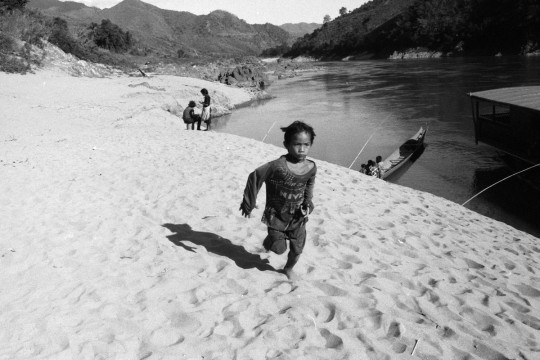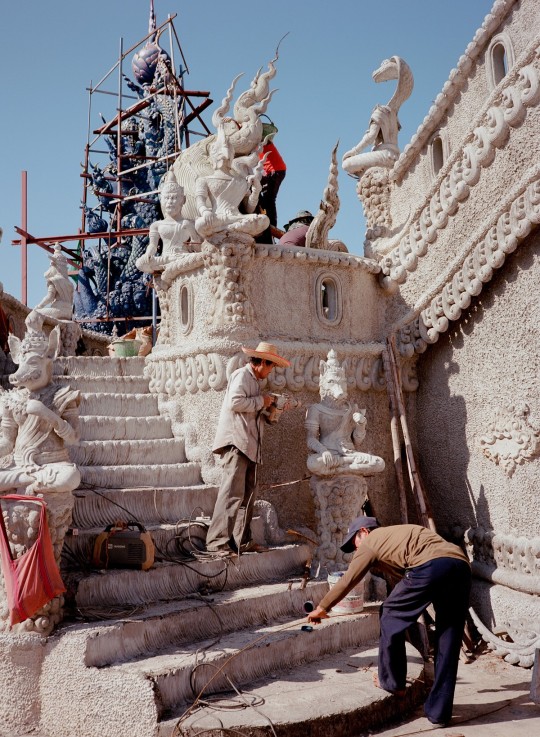Time is an illusion. Time only exists when we think about the past and the future. Time doesn't exist in the present here and now. (Marina Abramovic)
Don't wanna be here? Send us removal request.
Text
zarni kuniead tun for vice: a review
Yesterday Vice released an article on Sydney based photographer, Zarni Kuniead Tun (Zarni), that I really connected with. The article delved into Zarni’s beginnings as a photographer and his ability to capture the “warmth, closeness and vulnerable humanness of the everyday”.
So, let’s talk about it.
Zarni is a Burmese-Thai photographer and music producer, with a keen eye for capturing the beauty of everyday life, whether this be something as simple as a smoke break, a handshake, or a hug. Zarni claims that his goal is to be a narrator of the lives unfolding in Sydney’s CBD and dedicates most of his weekends to this. This side of photography is something I have always admired and tried to capture in my own work as I believe there is such an overlooked beauty to be found in the mundane moments of life. I think the photographer that fuelled this interest for me is Nan Goldin, who documented every detail of her life, however exciting or mundane. She took photos of the world and people around her, allowing her to “obsessively record every detail” and “enable [her] to remember”. And, although Nan Goldin’s and Zarni’s photography styles may look worlds apart, I believe they come from the same drive and admiration of the everyday.
Now, this quote from Zarni really made me stop in my tracks…
“Once you have a camera, you have the power to capture a moment in time which will never happen again”
(A quick reminder that my page is literally called Time Does Not Exist Here for this exact reason!!)
Zarni continues on, stating that although the city can be very dry and pretentious, it’s the simple moments that bring him a lot of joy to capture. I think that living in a generation centred around social media and shock value, it’s so important we take a step back and embrace every moment, no matter how small. And, as scary as it sounds, you never know when these forgettable moments are going to happen for the last time, so why not appreciate them as much as possible?
(okay, let’s get back to the article before I spiral)
With much of Zarni’s work focusing on the idea of ‘home’, he embarked on a trip to Thailand and Laos in early 2023. The result? Over 1000 photos taken, 33 rolls of film developed, and a formative piece of work named SABAI. And let me tell you, the photographs in this series are truly something to admire. Although, Zarni made a point to say that his photography is no better than anybody else’s, he is just a good curator of work.
See below for some of my favourites!



The article finishes on a really interesting analogy in which Zarni compares his style of photography to music sampling, stating that he finds the beauty in such small moments and puts his own spin on it. For Zarni, his photography (and life) is entirely ‘sampled’ from his parents and life experiences. I thought this idea was really fascinating and have found myself connecting the dots of my life since reading the article (I suggest you try as well, you never know what you may discover about yourself!).
Overall, this article was extremely captivating and definitely led me to some points of personal reflection surrounding my photography and life experiences. I strongly encourage you to have a read of the article and let me know what you think!
Xoxo Dakota
0 notes
Text
so, what is documentary photography?
Okay, time for a quick history lesson (I promise you’ll love it)
Documentary photography is an extremely raw and unfiltered style of photography that provides viewers with an accurate representation of people, place, and events. It uses a wide range of approaches to capture a real moment in time, usually conveying a message about the world. Now, this may sound similar to photojournalism – which generally concentrates on breaking news events – but the difference is that documentary photography typically focusses on an ongoing story (usually through a photo series) and draws attention to world issues that require remedial or political action.
Documentary photography can be seen as early as the 1800s, with Matthew Brady documenting the American civil war and Jacob Riis who captured the poverties of New York in his work, How the Other Half Lives.
Now fast forward to the turn of the twentieth century, photography became crucial in capturing real world events. From David Moore capturing the hardships faced on the streets of Sydney to Robert Capa immortalising life during the Spanish Civil War, documentary photography became a vital way of recording history.
And, with the increase of these images be printed in publications such as LIFE, TIME, and Vanity Fair, the camera became a tool for social change, shedding light on moments of injustice and inequality. Photographers became focused on capturing and exposing truths to the world. Alfred Stielglitz is considered a pioneer for this ‘social documentary photography’, producing numerous street photography works, such as Steerage, in 1907.
Documentary photography undoubtedly boomed during the First and Second World War, with artists focus on recording the horrors unfolding worldwide. The New York Metropolitan Museum highlights this, stating that
‘The inherent violence of the war soon engendered a new commitment by the world’s photographers to document every aspect of the fighting, from life in the trenches to views of fighter planes cruising the skies. Nothing was left hidden from the camera’s burrowing eye.’
Then, with the rise of digital technology in the twenty-first century came a decline in the need for published photography, and documentary photography found a new audience in galleries and museums. This has led to a lot of debate surrounding the photographer’s motivations and what aspects of their work are fact or fiction. Nonetheless, photographers like Nan Goldin (a personal favourite) have used their platforms to capture real lives and moments in history, keeping the purpose of this style at the core of their work.
xoxo Dakota
0 notes
Text
the ties of documentary photography: a reflection
I still remember the first camera I every owned; I was 10 years old, and it was a small, deep blue-coloured Nikon (before I covered it in stickers, that is). And when I tell you I loved this thing, I mean it. It came everywhere with me. I don’t doubt that every member of my extended family got to experience the joys of 10-year-old me shoving a lens in their face and telling them to smile… I also don’t doubt that every single photo taken was hidden behind my Twistie covered thumb.
Now, fast forward to age 14 or 15… Instagram was booming, fashion influencers were entering the world, and clothing trends were… questionable. And I absolutely fell in love with this world. I think I spent almost every weekend out with my friends getting dressed up and taking photos to post on Instagram. We’d be walking around Fremantle in our hand-painted denim jackets, brand new Dr Martens blistering our heels (you know the feeling), pointing out every mural and squealing about how cool of a backdrop it would be. And let’s just say the photos were definitely not as cool as we thought they were.
The point is, I’ve loved taking photos for as long as I can remember. I love the creativity and the technicalities of it. I love that you can edit photos into anything you want them to be. But I especially love the joy that is capturing a moment and leaving it as is. Untouched. Unfiltered. Raw. I guess that’s why I love film and documentary photography so much, it does exactly that – freezes time.
Unlike posed images, documentary photography has a way of drawing you in and making you part of a specific moment in time. You can almost feel the emotion, hear the music, smell the aroma. And, as someone who admittedly has a fear of how quickly life passes, I am fascinated by this.
I hope that my blog can help you connect to photos and moments. And I hope for a brief moment you are drawn into a moment of time and allow yourself to pause in it. Because after all… time does not exist here.
xoxo Dakota
1 note
·
View note
Photo

Nan Goldin (American, b. 1953)
Heartbeat, 2000
7K notes
·
View notes
Photo

Jennifer Jason Leigh photographed by Nan Goldin, 1997
2K notes
·
View notes
Text

Heart-Shaped Bruise, NYC (1980)
© Nan Goldin
2K notes
·
View notes
Text
Adam Zhu is documenting a new era of downtown New York youth culture
2 notes
·
View notes
Text
Venice Beach Skatepark | 2020
on 35mm
by Carlos Guevara

87 notes
·
View notes

